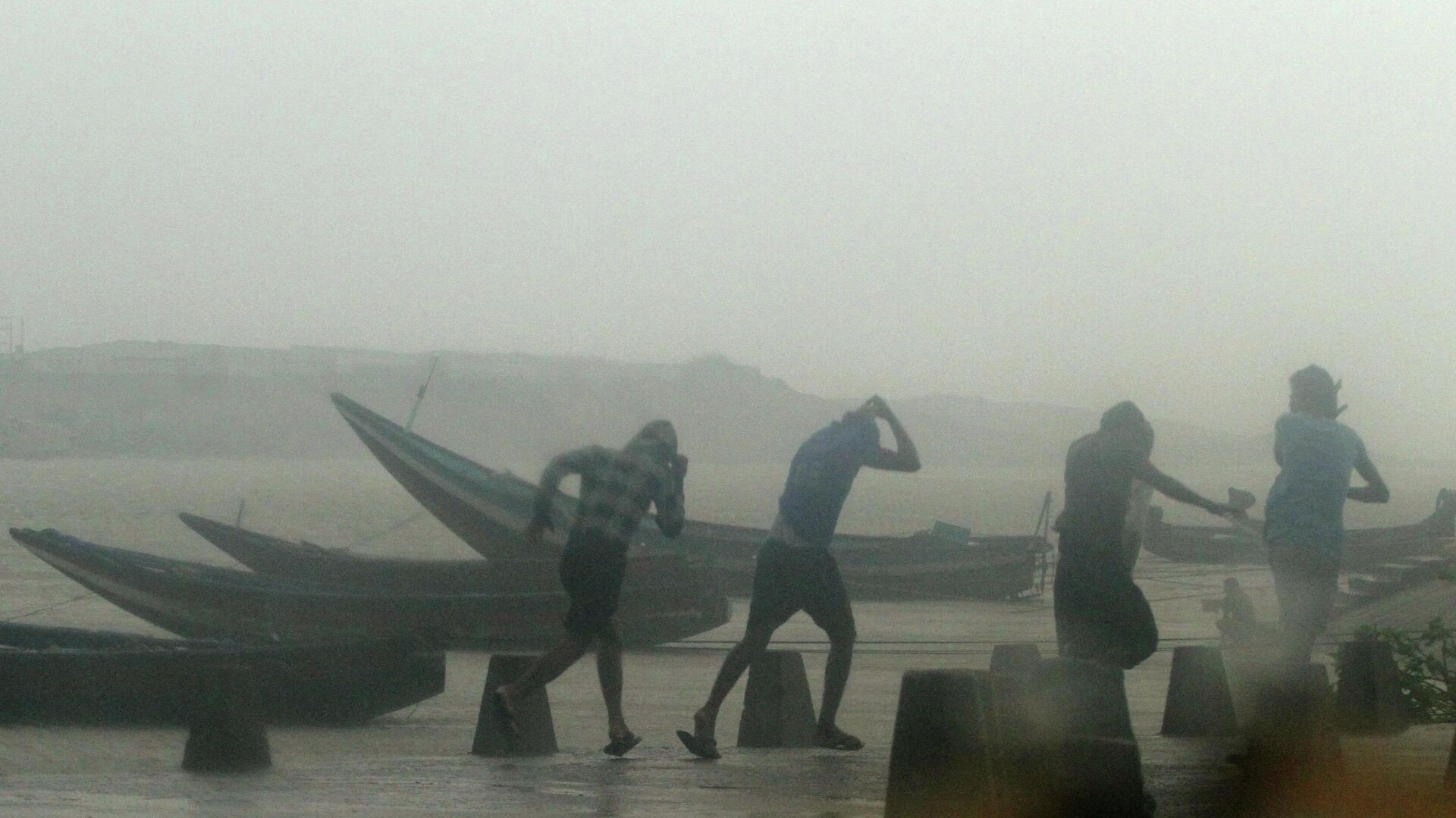https://sputnikglobe.com/20220204/indian-scientists-warn-of-imminent-threat-to-populations-of-south-china-sea-bay-of-bengal-1092751483.html
Indian Scientists Warn of Imminent Threat to Populations of South China Sea, Bay of Bengal
Indian Scientists Warn of Imminent Threat to Populations of South China Sea, Bay of Bengal
Sputnik International
The regions of the Bay of Bengal and South China Sea are densely populated. A 2017 UN report claimed that a sea-level rise of half a meter could displace 1.2... 04.02.2022, Sputnik International
2022-02-04T14:30+0000
2022-02-04T14:30+0000
2022-11-23T13:01+0000
climate
indian ocean
bay of bengal
south china sea
china
east asia
persian gulf
gulf of oman
climate change
https://cdn1.img.sputnikglobe.com/img/07e5/0c/03/1091218787_0:167:3343:2047_1920x0_80_0_0_254ee4187ee5f5ebff9ae262edece00f.jpg
A new study carried out by Indian scientists has painted a grim picture for the coastal population of southern India and east Asia as the region could experience waves of up to one metre.A team of scientists led by Athira Krishnan projected different sets of waves at the mid and end-century, depending upon different greenhouse gas emission scenarios forecast by the Intergovernmental Panel on Climate Change (IPCC) called RCP4.5 and RCP8.5.An increase of 40cm in maximum significant wave heights is projected over regions in the North Indian Ocean, north-west Arabian Sea, north-east Bay of Bengal, and the South China Sea.A 2017 UN report says that around 600 million people live in coastal areas less than 10 metres above sea level. A rise of half a metre sea level could displace more than 1.2 million in the Caribbean Sea and the Indian and Pacific Oceans.The scientists have used different temperatures for their study and linked them to wind speed, sea level pressure, and sea-surface temperature.Projections show that the Gulf of Oman and the Persian Gulf can experience higher warming rates exceeding 2 degrees Celsius under RCP8.5 by the end of the end-century. The temperature rise will generate higher waves which can destroy the livelihood of about 97 percent of the world’s fishers, mostly living in developing countries.
https://sputnikglobe.com/20210519/india-gears-up-for-another-powerful-cyclone-brewing-in-bay-of-bengal-1082934987.html
indian ocean
bay of bengal
south china sea
china
east asia
persian gulf
gulf of oman
Sputnik International
feedback@sputniknews.com
+74956456601
MIA „Rossiya Segodnya“
2022
Rishikesh Kumar
https://cdn1.img.sputnikglobe.com/img/07e4/08/04/1080055820_0:0:388:389_100x100_80_0_0_40018ee210946d65d49ffba4f4c008e1.jpg
Rishikesh Kumar
https://cdn1.img.sputnikglobe.com/img/07e4/08/04/1080055820_0:0:388:389_100x100_80_0_0_40018ee210946d65d49ffba4f4c008e1.jpg
News
en_EN
Sputnik International
feedback@sputniknews.com
+74956456601
MIA „Rossiya Segodnya“
Sputnik International
feedback@sputniknews.com
+74956456601
MIA „Rossiya Segodnya“
Rishikesh Kumar
https://cdn1.img.sputnikglobe.com/img/07e4/08/04/1080055820_0:0:388:389_100x100_80_0_0_40018ee210946d65d49ffba4f4c008e1.jpg
climate, indian ocean, bay of bengal, south china sea, china, east asia, persian gulf, gulf of oman, climate change
climate, indian ocean, bay of bengal, south china sea, china, east asia, persian gulf, gulf of oman, climate change
Indian Scientists Warn of Imminent Threat to Populations of South China Sea, Bay of Bengal
14:30 GMT 04.02.2022 (Updated: 13:01 GMT 23.11.2022) The regions of the Bay of Bengal and South China Sea are densely populated. A 2017 UN report claimed that a sea-level rise of half a meter could displace 1.2 million people from low-lying islands in the Caribbean Sea and the Indian and Pacific Oceans.
A new study carried out by Indian scientists has painted a grim picture for the coastal population of southern India and east Asia as the region could experience waves of up to one metre.
A team of scientists led by Athira Krishnan projected different sets of waves at the mid and end-century, depending upon different greenhouse gas emission scenarios forecast by the Intergovernmental Panel on Climate Change (IPCC) called RCP4.5 and RCP8.5.
“Extreme wave heights are seen to intensify by about 1 metre over the South Indian Ocean during the June-July-August months,” the study published in the journal ‘Climate Dynamics’ states.
An increase of 40cm in maximum significant wave heights is projected over regions in the North Indian Ocean, north-west Arabian Sea, north-east Bay of Bengal, and the South China Sea.
A 2017
UN report says that around 600 million people live in coastal areas less than 10 metres above sea level. A rise of half a metre sea level could displace more than 1.2 million in the Caribbean Sea and the Indian and Pacific Oceans.
The scientists have used different temperatures for their study and linked them to wind speed, sea level pressure, and sea-surface temperature.
Projections show that the Gulf of Oman and the Persian Gulf can experience higher warming rates exceeding 2 degrees Celsius under RCP8.5 by the end of the end-century.
The temperature rise will generate higher waves which can destroy the livelihood of about 97 percent of the world’s fishers, mostly living in developing countries.





